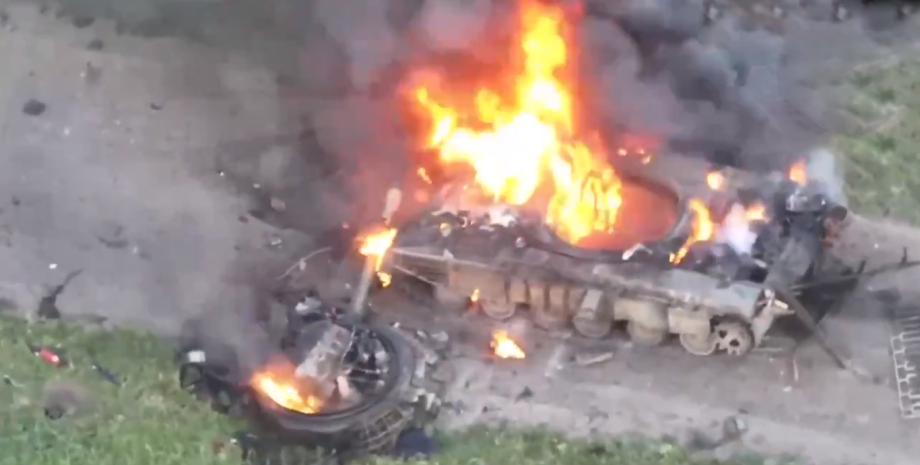
In the video you can see how a small drone crashes into a Russian tank, resulting in a powerful detonation. According to the military, the drone was collected in Ukraine from Chinese components and equipped with a Soviet cumulative grenade. The video was drawn to Forbes magazine experts, noting that FPV drones are extremely dangerous for unprotected infantry, but armored vehicles can usually withstand strokes of such devices and continue the fight.
Such drones weigh about a kilogram, while the weight of the T-80 tank reaches 46 tons. In the video, the tank was also equipped with blocks of additional jet armor and a screen to protect against drones. "Usually, a shot from the FPV on the tank leads to minor damage. However, this time the T-80 exploded a huge fiery ball that separated the tower from the body and burned the crew," the edition said.
Former US Defense Agency Agency Trents Telenko on the social network X suggested that the Ukrainian military took an example from the Swedish RBS-56 Bill ATGM. "I begin to think about whether Ukrainian FPV developers have taken an example from the Swedish RBS-56 Bill Atgm and have not tilted or tilted their cumulative charges down to get better into the ammunition of Russian tanks," he wrote.
The RBS-56 is an anti-tank rocket developed by the Swedish company BOFORS, with a warhead, which, during the processing of sensors on the bottom of the rocket, explodes down, not forward. This method of attack from top to bottom is aimed at thin armor on the top of the tank. The authors of the article believe that the FPV-Dron video punched the tank from above and got into the ammunition, causing another explosion.
"Such a simple thing makes FPV much more deadly for the Cold War tanks," Trent Telenko said. The publication is believed that the theory is plausible because thousands of light anti-tank missiles have received from their foreign partners, including NLAW, which, like RBS-56, is a product of BOFORS and equipped with a warhead directed down. In addition, there was a video on the network where the Ukrainian military is shooting a rocket from a damaged NLAW launcher.
The weapon expert Matthew Moss suggested that this is done to "use a warhead in FPV. " "It would be interesting," Matthew Moss said. For their part, the authors of the article emphasized that Ukrainians do not have to remove the NLAW warheads from the NLAW missiles to equip them with FPV. The Ukrainian military industry is quite capable of producing such ammunition from scratch. "It is becoming increasingly obvious that Ukrainians have ammunition for their FPV-pings.
There are not many other ways that tiny drones can turn giant tanks into high fiery balls," experts summed up. We will remind, earlier servicemen of the 71st and 57th brigades of the Armed Forces destroyed two Russian tanks of the T-72 in the city of Vovchansk, Kharkiv region with heavy fugas UKL-Kamikadze. In addition, the fighters of the Strike Drones Company battalion are used to destroy Russian UAV equipment with pre -inspection that are not afraid of the ELS systems.










All rights reserved IN-Ukraine.info - 2022